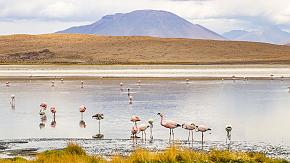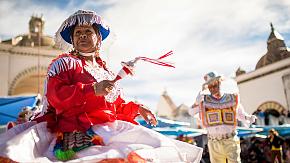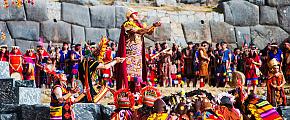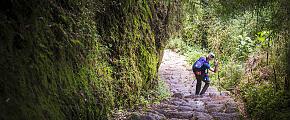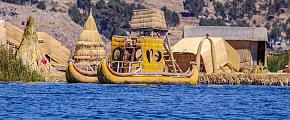What Fun Facts Do You Know About Lake Titicaca
What do you know about Lake Titicaca? Lake Titicaca (Lago Titicaca in Spanish) is one of your top attractions to visit in Peru. "Titicaca" has a few different meanings, and the most acceptable one means "Rock of the Puma". There is much more to discover beyond its name. Learn more about this amazing place from the top 10 fun facts below.
- Very High, Very Large, and Very Old
- Cradle of the Incas
- Two Countries Share One Lake
- All Made by Reeds in the Floating Islands of Uros
- It Was Used as Prisons Before in Lake Titicaca
- You Can Have a Homestay on Remote Islands
- Textile Art Lists in UNESCO
- Reed Boats With Animal Heads
- Isla Del Sol: An Island Has No Cars but Stones
- Underwater Wonders
- Useful Travel Tips for Traveling to Lake Titicaca
 Map of Lake Titicaca
Map of Lake Titicaca
Very High, Very Large, and Very Old
There are very few lakes like Lake Titicaca, which is so high, vast, and ancient.
How high? Lake Titicaca is well-known as the highest navigable lake in the world, with an elevation of 3,812 m (12,507 ft).
How large? It is the largest freshwater lake in South America, with a surface area of 8,372 km2 (3,232 sq mi).
How old? As one of the oldest lakes in the world, Lake Titicaca has over 1 million years of history.
Cradle of the Incas
It is believed that Isla del Sol (Island of the Sun) in Lake Titicaca is the birthplace of Inca civilization, according to Inca legend. In this mythology, the first king of the Inca, Manco Capac, and his sister-wife, Mama Ocllo, were sent by their father Inti (the sun), to bring order and civilization to the Andes. Now, we still can see the charm of the past days by exploring over 180 Inca ruins on this island.
Two Countries Share One Lake
Lake Titicaca consists of two parts: the western part of the lake belongs to the Puno Region of Peru, and the eastern part belongs to the La Paz Department of Bolivia. This big lake is also divided by an 800 m (2,620 ft) strait crossing at the narrowest point. The larger one is Lago Grande (also called Lago Chucuito, which means big lake), which is mainly in Peru. The smaller one is named Wiñaymarka (also known as Lago Pequeño, which means "little lake"), and is mainly in Bolivia.
All Made by Reeds in the Floating Islands of Uros
There are many interesting things about Lake Titicaca, and the most famous one should be the Floating Islands of Uros. Can you imagine an island made entirely of reeds? What feeling would it be when you first step into such a "soft" but safe place? If you are lucky, you can see the local people reap the reeds and ship them to a new home they plan to build. In Uros, you will marvel at human ingenuity about their homes' construction and maintenance.
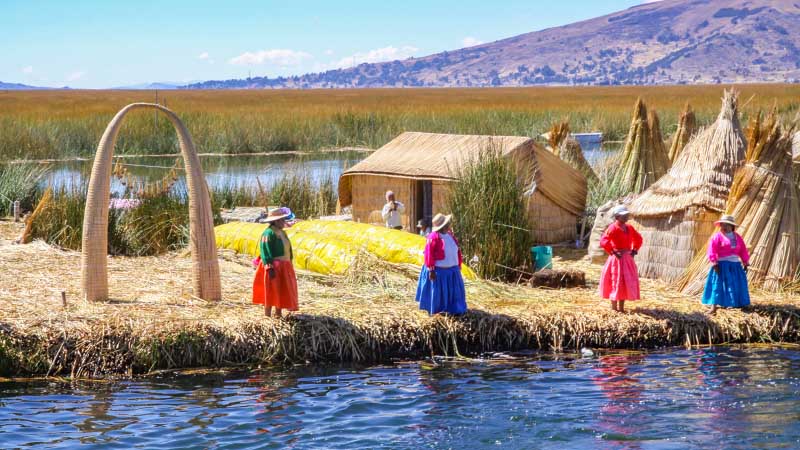 Floating Islands of Uros
Floating Islands of Uros
It Was Used as Prisons Before in Lake Titicaca
Due to the isolated location and harsh conditions of Lake Titicaca, there were some prisons on Amantani Island, Taquile Island, and other islands during different historical periods. Who can imagine such terrifying places of punishment have become peaceful and scenic tourist destinations today?
You Can Have a Homestay on Remote Islands
Lake Titicaca provides homestay choices in both Peru and Bolivia sides. If you want to have an experience with the local family, Amantani Island, Taquile Island, and Uros Floating Islands in Peru and Isla del Sol in Bolivia are the best choices. Be mindful that the conditions of homestay are limited, and it is better to ask for the details before you decide to do it.
Textile Art Lists in UNESCO Intangible Cultural Heritage
The exquisite textiles in Taquile depict the traditional culture of Lake Titicaca and handed down for thousands of years. Although textiles were traditionally made by men, nowadays, no matter whether young or old, men or women, everyone is skilled in weaving and knitting. The colorful textiles generally use natural fibers, such as vicuna wool and alpaca wool. The patterns show the natural scenery and spiritual beliefs of the Andean people, which make it very meaningful.
Reed Boats With Animal Heads
Once you travel to Lake Titicaca, you can see the unique totora reed boats, although most visitors arrive by modern boats. Called "balsa reed boats" by locals, this kind of boat is handmade by Uros people once used for fishing and hunting waterfowl. Shaping as twin-hulled catamarans with weird animal heads like pumas, eagle, or jaguars, these traditional boats symbolize protection, strength, and a connection to nature.
 Reed Boat
Reed Boat
Isla Del Sol: An Island Has No Cars but Stones
Even in this modern time, Isla Del Sol still retains a traditional way of life. There are many stone ruins and remote trails on this island. You can visit Isla Del Sol by boat from Copacabana, a small town on the Bolivian side of Lake Titicaca. But there are no cars on the island, and you will have to explore it on foot.
Underwater Wonders
Lake Titicaca is not only an attractive site above ground, but also possesses lots of underwater wonders. Near the Bolivian shore, there are submerged cities under the water of Lake Titicaca. Thousands of artifacts, such as carved llamas, ceramic feline incense burners, metal, shell, and stone ornaments are found here. It is a good chance to gain an insight into thousand-year-old ancient cultures. The endangered Titicaca water frog and other creatures in the water also make this lake rarer.
Useful Travel Tips for Traveling to Lake Titicaca
Preparing for Altitude
Because of the high altitude in Lake Titicaca, some travelers will get altitude sickness. So, it is recommended to have a good rest before you travel to Lake Titicaca. Drinking some coca tea is also a good way to help relieve discomfort. See more about How to Avoid Altitude Sickness in Peru.
Be Mindful of the Weather Conditions
The temperature in Lake Titicaca does not vary much throughout the year, generally between 15-20°C in the daytime. But if you want to stay overnight in the lake, do remember to bring warm clothes, as it would drop to about 5 °C.
NO SMOKING
Reed is used for everything in Lake Titicaca. It is very important to make fire protection. Any small fire may cause a big disaster. In this case, don't smoke when you visit the islands, especially on the Floating Islands of Uros. After all, no one wants to risk setting the whole island on fire.
Quick Question
Related Posts You May Like
What Our Clients Say
Explore the latest verified reviews of Odynovo's travel services on Tripadvisor, Google, Trustpilot, Product Review and more trusted platforms.



